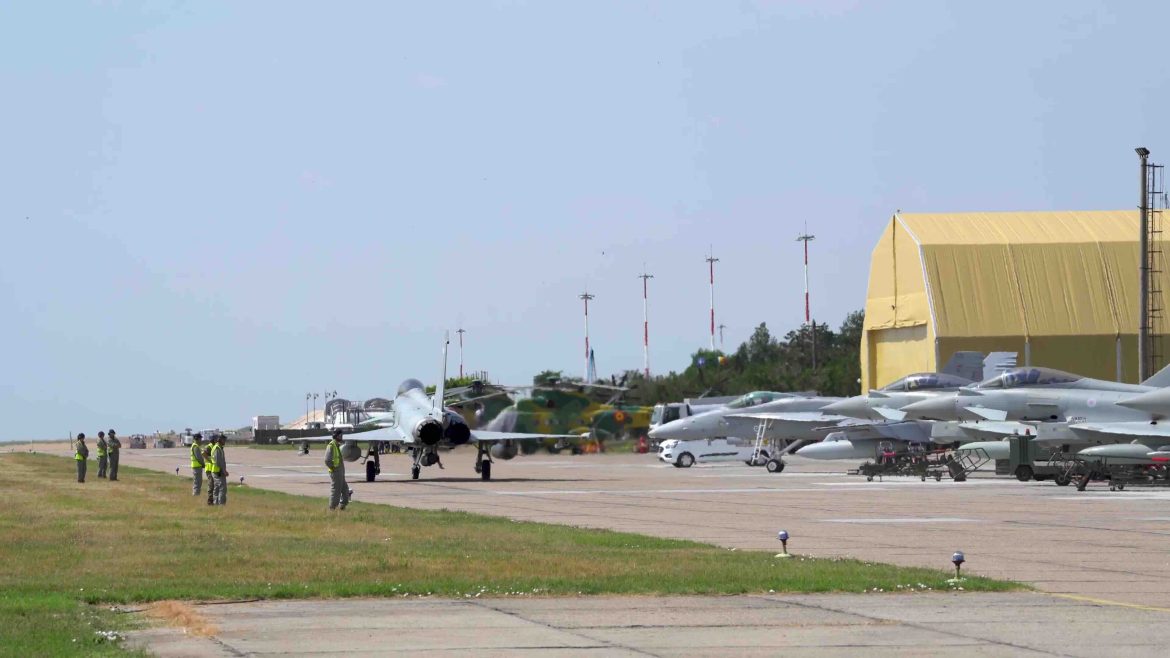Romania’s Ministry of National Defence (MApN) has confirmed that the United States will reduce part of its military presence in Europe, including elements assigned to Romania’s Mihail Kogălniceanu Air Base.
The ministry said Bucharest and allied capitals had been informed as part of Washington’s ongoing reassessment of its global force posture.
In a statement issued on Wednesday, 29 October, MApN described the move as a “redimensioning” of US forces on the eastern flank rather than a full withdrawal. It specified that certain brigade elements would cease rotational deployments to Europe, among them forces earmarked for Romania and stationed at Mihail Kogălniceanu, near Constanţa on the Black Sea.
Defence Minister Ionuț Moșteanu told a press conference that around 900–1,000 US service personnel will remain in-country, spread across Mihail Kogălniceanu, the Deveselu missile defence site, and the air base at Câmpia Turzii. He added that Romania had been in continuous contact with its US partner and that strategic enablers would be unaffected. Romanian outlets reported the reduction could amount to roughly 800 troops.
MApN said the adjustment reflects priorities signalled by the Trump administration earlier this year and takes into account NATO’s strengthened presence and activity on the eastern flank, which allows Washington to recalibrate its footprint. Romanian media carried the ministry’s wording that allies had been formally notified of the decision.
The announcement follows months of debate in Europe about potential US troop changes. In April reports surfaced that Pentagon was studying options to withdraw up to 10,000 troops from Eastern Europe, a proposal officials stressed was under consideration as part of a broader posture review. On the same day, other US and European officials publicly sought to reassure allies that no final decisions had been taken.
Also in April, US Army Europe and Africa announced that personnel and equipment would be relocated from the Rzeszów–Jasionka hub in south-eastern Poland to other sites in the country. The command framed the step as a planned repositioning to optimise operations and support to allies, with Polish and NATO forces taking a larger share of responsibilities at the logistics node.
Romania has hosted a steady US presence since Russia’s full-scale invasion of Ukraine in 2022, with rotations peaking at several thousand troops during periods of intensified regional activity. Mihail Kogălniceanu has served as a principal hub for air policing, training, and onward movement, while Deveselu hosts the Aegis Ashore ballistic missile defence system. Local reporting on Wednesday noted that the base expansion programme at Mihail Kogălniceanu continues, and that allied detachments from other NATO nations remain active.
Romanian media and officials emphasised that the latest US step does not signal a downgrading of bilateral defence ties. The minister underlined that the “American flag will remain in Romania,” and reiterated that key capabilities are unchanged. Earlier this month, Romania’s foreign minister also highlighted the importance Bucharest attaches to the US military presence.
Regional adjustments are occurring against a wider backdrop of allied burden-sharing discussions and NATO’s ongoing reinforcement of its forward posture. While earlier Romanian statements in April indicated that Bucharest had not yet received official notification about US withdrawals, Wednesday’s confirmation marks the first formal acknowledgement that certain rotations will end.
Kyiv Post reported today that the United States intends to remove a brigade-level formation from Romania as part of a broader recalibration, though precise timelines and unit details were not officially disclosed in Bucharest’s announcement. Romanian outlets similarly described a halt to the rotation of a brigade with elements across several allied countries.
MApN scheduled a briefing for Wednesday to set out further details. As of publication, the ministry’s statement indicates that approximately one thousand US personnel will remain in Romania, while NATO’s enhanced presence on the eastern flank continues under allied frameworks.


